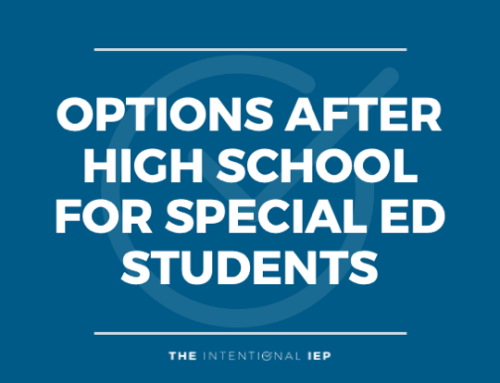When we begin writing Individualized Education Programs (IEPs), we are often taking baseline data, administering complex assessments, and getting anecdotal feedback and reports from adults and professionals that know our students best. Unfortunately, what do most of those sources give us? Student deficits.
This is not necessarily bad information! This information helps guide what our students still need to know, and what we can focus the annual goals and benchmarks on. This information allows us to determine what additional supports students need, and what setting the student needs to make the most progress due to those deficits.
What we do NOT want to do with this information is to transcribe it as it is directly into the IEP.
Why not?
If we are to take student assessment findings, data, and anecdotal reports and toss them into the IEP as they are, they will likely come across as a set of student deficit areas, with no focus on student strengths. We do not want to do this!
An IEP was never designed to be a deficit-focused document. It is important to remember the audience of an IEP, especially in the meeting. The individuals around the table are professionals who work alongside the child, the student’s family, and many times, the student themselves. Remembering this, we want them to hear the honest truth about the student’s progress, but in a way that highlights strengths and focuses on the skillsets we want to enhance over the next year.
What next?
We have the assessment findings, we have the data collection, we have the anecdotal reports. Now it is time to change up some language so we can ensure the document is focused on strengths, goal setting, and positives.
How?
Sometimes it seems impossible, or daunting at best, to make a student’s IEP strengths-focused. An important place to start is the Present Levels of Performance.
A simple way to do this is to write out the information you want to share as a draft. After all of the information is written out, you can go back through with fresh eyes and tweak some of the language to help ensure that it is positioned in a way that is strengths focused.
Here’s an example:
Original sentence: “Joshua cannot sit in his seat during academic instruction for more than two minutes.”
Strengths focused sentence: “At this time, Joshua can independently sit in his seat during academic instruction for one and a half minutes.”
Not sure of the proper language to use when keeping an IEP student centered? We can help! Click the image above to join The Intentional IEP where you will have access to this, and so many other resources!

A great exercise is to read this document with your mindset in the lens of the student. If your student read what you and the team wrote as their present levels of performance, would they be empowered? Or would they be heartbroken, or feel ashamed?
It is important that we do not sugar coat or diminish the needs our students have, but it is also important that we make this an empowering document focused on where the student is headed, not a summary of their “grim reality”.
Keeping IEPs honest, clear, AND strengths focused is not the easiest of tasks, but one that is necessary. As special education teachers, part of our job is to keep progress at the forefront and ensure that we are always advocating for the best possible future for our students. We got this!





